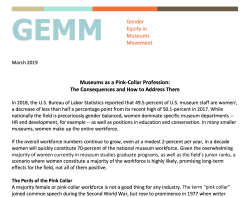Making Decisions Transparent
Posted: June 22, 2015 Filed under: Leadership, Leading Across Organizations, Nonprofit Leadership | Tags: decision making, Leadership, museum, transparency 4 CommentsThis week I want to pick up an earlier thread and talk about transparency and decision making. My workplace is involved in a search for a new head. We were told several months ago that because of the nature of the field {independent schools}, that the search would be a closed process. It is being conducted by a search firm and a committee composed of board members, faculty and staff. Nonetheless, the rest of us have had numerous opportunities to meet and comment on past heads of school and our hopes for the future. One of the principal complaints by many who met with the committee was the insular nature of the outgoing leadership. Decisions were made by a close-knit group and handed down to everyone else. The closed-door process left everyone else free to fill in the narrative. And narratives, whether created at museums or schools, whether about policy, personnel or change, take on a life of their own.
Which brings me to transparency. I want to say at the outset that not all decisions need to be transparent. In fact, it’s not the decision making that needs transparency. It’s the ramp up to making the decision that should be open.
All leaders are deciders. That’s the nature of the game. But here’s the deal: Are you a leader who shuts your door, paces the room, and emerges with a decision? Or do you closet yourself with a few trusted colleagues and then let them spread the news? Perhaps you meet and talk with staff and then shut your door and think? Is your staff comfortable discussing thorny problems with one another? Do you speak with all staff members who may be affected by a decision? And last, do you think of decision-making discussions as learning opportunities for staff? Because they really are. Think about it. Here are some things a staff or department, who talks together, learns:
- to trust one another.
- that decision making is a process.
- what the goal of the process is–which may not be the goal of the entire staff or shared by the entire staff.
- respect for minority viewpoints.
Another payoff of inclusiveness during decision making is voices rarely heard may help your organization save money. For example, if you’re selecting software and only involve IT and department heads, what happens when the folks who actually use proposed software tell you it won’t work and why? And last, and this is also the leader’s role, by talking it through, a staff learns how to work with a decision even when it didn’t go the way they hoped. And it’s you, the leader, who sets that tone although it’s likely easier when a majority of the staff have participated in the process. And what does your staff expect on the receiving end of a transparent decision making process?
- a leader who hasn’t made up her mind, who comes to the problem in question ready to learn.
- a leader who respects her staff’s experience.
- a leader who is willing to guide the process so all voices are heard from.
- a leader who is open about the goals and parameters of a given project or decision.
- a leader who really listens.
If you work at a small to medium sized institution, altering your decision making strategy may not be very difficult. You likely meet with most of the staff for major decisions anyway. If you don’t, you may want to ask yourself why you don’t. If you work at a larger museum, changing the decision making process will involve getting departments and/or trustees, who may not work together often to engage with one another. The results though are elegant. And because Leadership Matters is constantly nagging you, our gentle readers, to read outside the museum world, take a look at this decision-making matrix from University of California Davis.
As always, let us know what you think. We’ve had almost 17,000 views since 2013, and we’re honored to have you all out there thinking and talking about museum (and your) leadership.
Joan Baldwin











Joan/Anne- I want you to both know how inspiring your blog and book has been to me, my team and our entire organization as we continue to go through tremendous change. Keep up the inspiration and good work!
-Mike
Mike–
Thanks for your kind words. We’re glad you’re enjoying the blog. If you and your staff want to weigh in on some of the Women+Museums issues, we’d love to hear from all of you (men and women).
Best,
Joan
The link to “decision-making matrix from University of California Davis” is broken.
Sorry about that. Try it now.
J. Baldwin